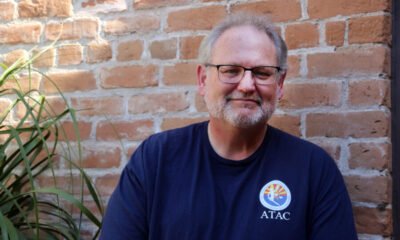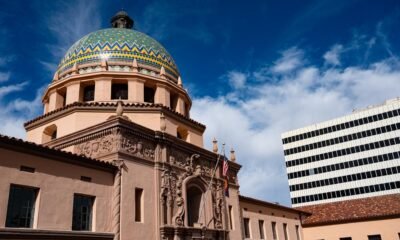Entertainment
Carolyn Campbell, Pima County’s Environmental Champion, Steps Down from Her Reign

Carolyn Campbell, a prominent figure in local conservation efforts, celebrated her retirement on Saturday night, receiving a crown and heartfelt tributes from colleagues and friends. Christina McVie, Campbell’s longtime ally in environmental advocacy, referred to her as “the Queen of the Environmentalists,” a title originally coined by the late radio host John C. Scott.
For over 25 years, Campbell served as the executive director of the Coalition for Sonoran Desert Protection, a coalition comprising more than 30 environmental organizations, including notable entities like the Center for Biological Diversity and Tucson Audubon Society. Referring to Campbell, McVie stated, “All of our success is the result of relationship building. Carolyn is the ultimate relationship builder.”
During her farewell address, Campbell reflected on her tenure, remarking, “It has been the honor of my life to work with this coalition. This coalition has gotten stuff done.” That “stuff” includes significant contributions to Pima County’s Sonoran Desert Conservation Plan, aimed at mapping land for its ecological importance and identifying areas needing protection.
This initiative gained momentum after the endangered listing of the cactus ferruginous pygmy owl in 1997, leading to the designation of critical habitat and streamlining the federal permitting process for developers. The plan has garnered numerous accolades and has served as a blueprint for similar community efforts.
Ray Carroll, a former Pima County Supervisor, recognized Campbell’s role in the plan’s success: “It’s not easy to keep a reputation for honesty through that kind of process, but Carolyn always kept her word.” Her influence has transformed how developers engage with the Coalition for Sonoran Desert Protection, involving them in discussions before seeking approvals.
In addition to her work on the conservation plan, Campbell played a vital role in the Regional Transportation Authority’s 20-year plan, which addressed infrastructure needs. She advocated for wildlife crossings along major roads to enhance safety for both animals and motorists. “It’s just as important to keep connectivity between preserves as it is to preserve land in the first place,” she noted.
Recognition for her contributions extended beyond her organization. Tucson Mayor Regina Romero and Pima County Supervisor Adelita Grijalva declared September 21, the date of her retirement celebration, as Carolyn Campbell Day. “Everything I know about open space, biodiversity and wildlife, I learned from Carolyn,” Romero expressed on social media.
Even in retirement, Campbell remains engaged in local land-use discussions, recently negotiating a development project that preserved a significant portion of land along Enchanted Hills Wash. Her ability to compromise while maintaining core values is a hallmark of her approach.
Sandy Bahr from the Sierra Club humorously remarked about Campbell’s future advocacy, teasing that her retirement won’t stop her from fighting for environmental causes. Born into a military family and raised across the U.S., Campbell found her path in environmental politics while working for former U.S. Representative Mo Udall. This experience ignited her passion for conservation.
After joining the Coalition for Sonoran Desert Protection at its inception, her leadership oversaw substantial progress in regional environmental management. As Campbell transitions to a board member role, she emphasized her confidence in the coalition’s new leadership.
At her retirement party, colleagues voiced their gratitude for her impact on Tucson’s environmental landscape. “We’re not Phoenix because of Carolyn!” shouted Trevor Hare, emphasizing her profound influence. Campbell received a watercolor painting of the cactus ferruginous pygmy owl, a fitting tribute to her legacy.
Reflecting on the crown presented to her, Campbell noted, “I will make it so even if I have to melt it down and re-do it!” Her dedication to environmental stewardship, community collaboration, and relationship-building leaves an indelible mark on Tucson and beyond.


















